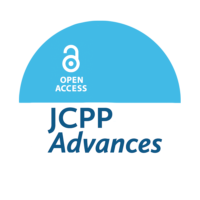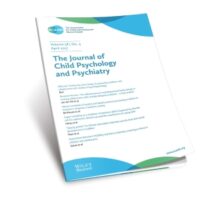Some highlights from our three journals JCPP, CAMH, and JCPP Advances. Each one of the posts below provides a link to read, and download the full paper.
Feature Papers
-

Self-regulatory control processes in youths: A temporal network analysis approach
Open Access paper from JCPP Advances – ‘This study provides insight into the dynamic interactions among self-control, response inhibition, and anger (momentary state and rumination) in male adolescents, advancing the understanding of self-regulatory control functioning.’ Fiorella Turri et al.
Read more -

Research Review: Current evidence and opportunities in child and adolescent public mental health: a research review
Open Access paper from the JCPP – ‘A public mental health lens is increasingly required to better understand the complex and multifactorial influences of interpersonal, community and institutional systems on the mental health of children and adolescents.’ Mina Fazel (pic) and Emma Soneson.
Read more -

Measurement bias in caregiver-report of early childhood behavior problems across demographic factors in an ECHO-wide diverse sample
Open Access paper from JCPP Advances – ‘While studies have shown that demographic variables influence caregiver ratings of behavior problems, the extent to which the CBCL/1.5-5 functions equivalently at the item level across diverse samples is unknown.’ Shuting Zheng (pic) et al.
Read more -

Performing well but not appreciating it – A trait feature of anorexia nervosa
Open Access paper from JCPP Advances – ‘We offer a novel behavioral method for measuring perfectionism independent of self-report, and we provide tentative evidence that this behavioral manifestation of perfectionism is evident during first-episode AN and persists even after recovery.’ Tine Schuppli Hjerresen et al.
Read more -

Identifying non-adult attention-deficit/hyperactivity disorder individuals using a stacked machine learning algorithm using administrative data population registers in a universal healthcare system
Open Access paper from JCPP Advances – ‘This research project aims to build a Machine Learning algorithm (ML) to predict first-time ADHD diagnosis, given that it is the most frequent mental disorder for the non-adult population.’ David Roche et al.
Read more -

Research Review: Sustained improvements by behavioural parent training for children with attention-deficit/hyperactivity disorder: A meta-analytic review of longer-term child and parental outcomes
Open Access paper from the JCPP – ‘This meta-analytic review investigated longer-term (i.e., more than 2 months post-intervention) child and parental outcomes of behavioural parent training for children with ADHD.’ Dominique P. A. Doffer (pic) et al.
Read more -

Associations of screen use with cognitive development in early childhood: the ELFE birth cohort
Open Access paper from the JCPP – ‘Our study found weak associations of screen use with cognition after controlling for sociodemographic and children’s birth factors and lifestyle confounders, and suggests that the context of screen use matters, not solely screen time, in children’s cognitive development.’ Shuai Yang et al.
Read more -

Testing reciprocal associations between child anxiety and parenting across early interventions for inhibited preschoolers
Open access paper from the JCPP – ‘Our findings coincide with developmental transactional models, suggesting that the development of child anxiety may result from child-to-parent influences rather than the reverse, and highlight the importance of targeting parent and child factors simultaneously in early interventions for young, inhibited children.’ Danielle R. Novick (pic) et al.
Read more -

Understanding the relationship between social camouflaging in autism and safety behaviours in social anxiety in autistic and non-autistic adolescents
Open Access paper from the JCPP – ‘This study explores the relationship between camouflaging in autism and safety behaviours in social anxiety (SA) among autistic and non-autistic adolescents.’ Jiedi Lei (pic) et al.
Read more -

Editorial: Evidence-based child and adolescent mental health care: The role of high-quality and transparently reported evidence synthesis studies
Open Access paper from JCPP Advances – ‘The publication of evidence synthesis studies (e.g., systematic reviews, meta-analyses of aggregated data or individual participant data, network meta-analyses, umbrella reviews) has grown exponentially in recent decades, with many placing these studies at the top of the pyramid of what is considered good evidence (Murad et al., 2016).’ Alessio Bellato (pic) et al.
Read more